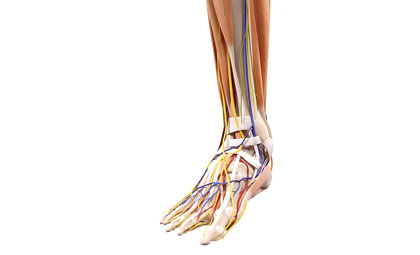

Peripheral artery disease is a buildup of plaque in the arteries that lead to your legs and feet. The result is a partial blockage of blood flow to your legs. As a form of arterial insufficiency, the blood circulation through the arteries is decreased.
What are the symptoms of Peripheral Artery Disease?
Reduced blood flow can lead to numbness and pain. The pain that you experience due to peripheral artery disease can be anywhere from mild to severe. You may also notice shiny skin, coldness, weakened pulse in your legs or feet, cramping, and slow toenail growth. If your condition is severe, you may develop gangrene or an infection. Other symptoms of peripheral artery disease may include:
- Painful cramping in your hip, thigh or calf muscles after certain activities, such as walking or climbing stairs (claudication)
- Sores on your toes, feet or legs that won’t heal
- A change in the color of your legs
- Hair loss or slower hair growth on your feet and legs
- Erectile dysfunction in men
Causes
This disease is generally caused by atherosclerosis. Atherosclerosis is the fatty deposits that can clog our arteries. When it occurs in the arteries supplying blood to your limbs, it causes peripheral artery disease. It should be noted that these two conditions are similar, but are different in the process of each condition and also the cause.
How is it Treated?
One of the most effective ways to reduce the effects of peripheral artery disease is to make lifestyle changes. Your doctor can help you identify the ways to do this effectively, which may include exercising, quitting smoking, lowering your blood pressure, lowering your glucose levels, and changing your diet to reduce sodium, saturated fat, and cholesterol.
In more serious cases, you may need surgery to redirect your blood via a bypass.













